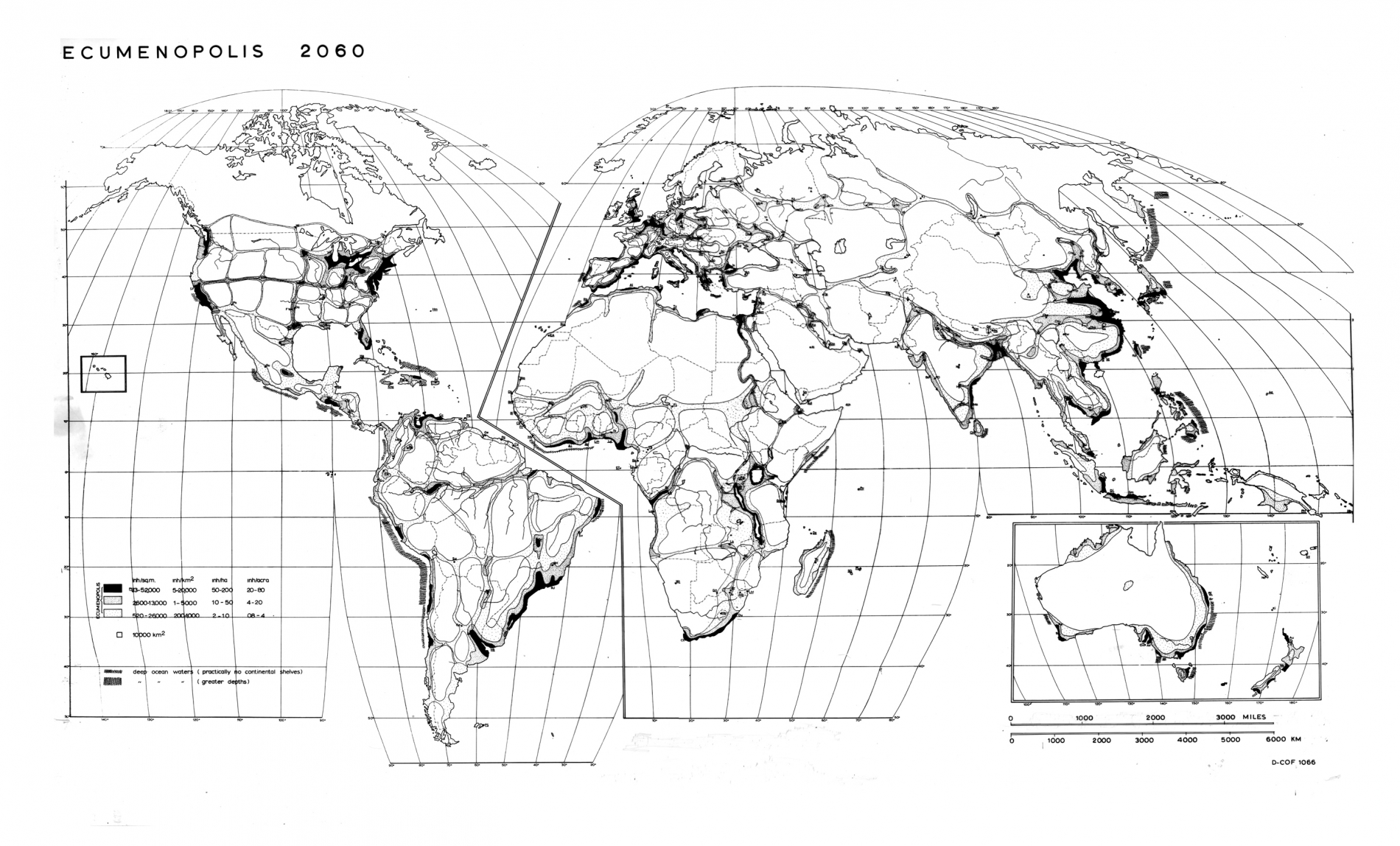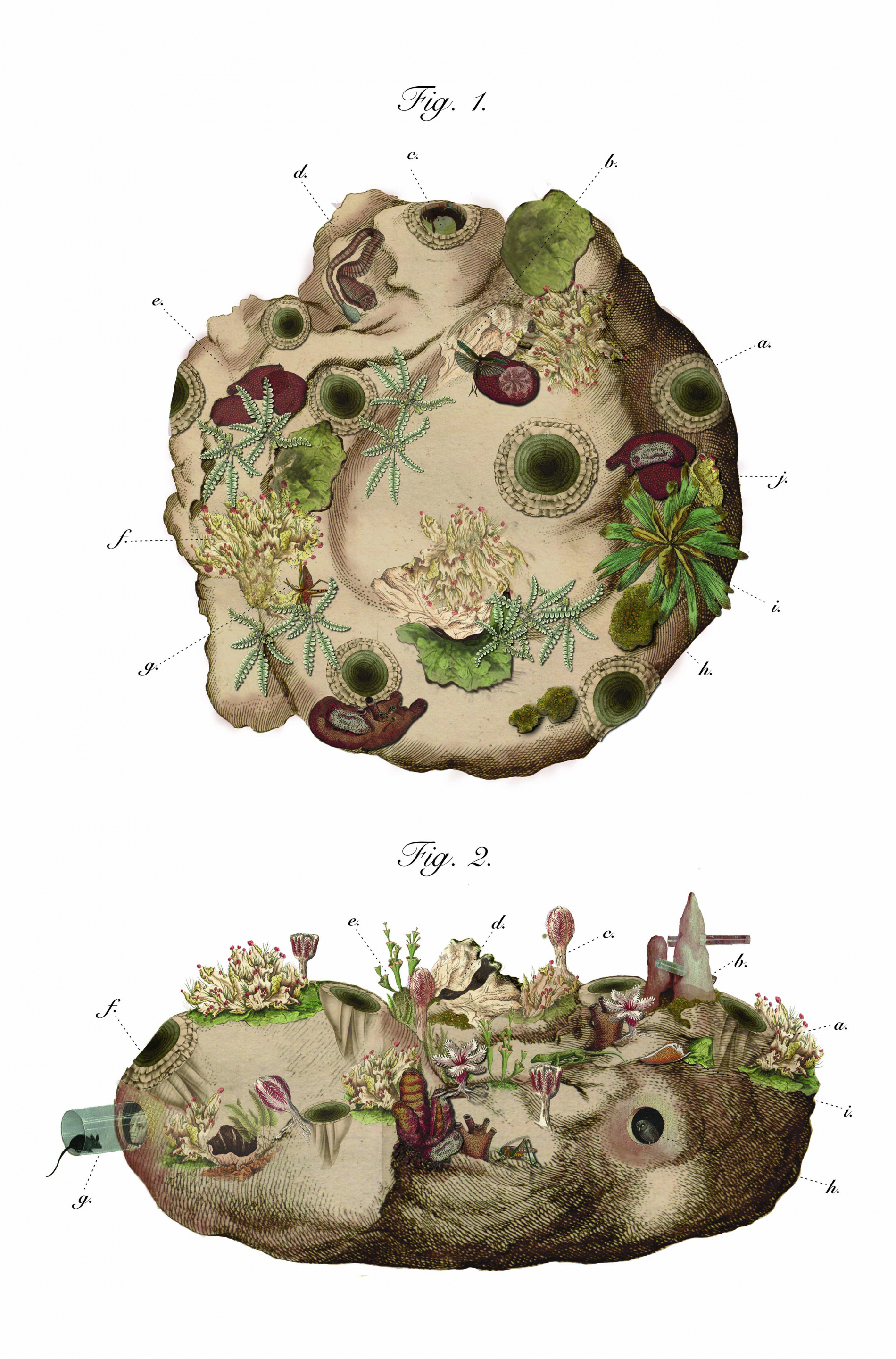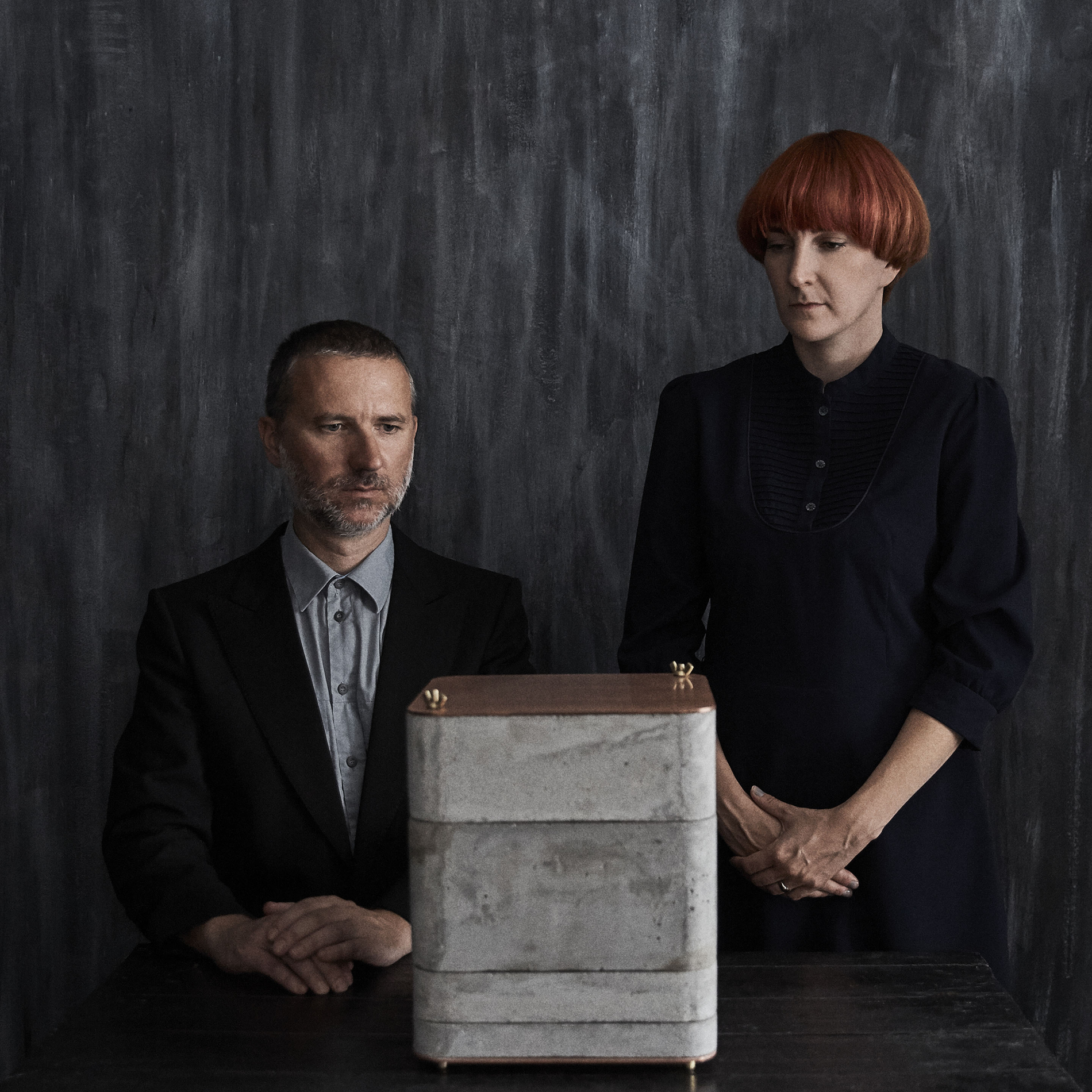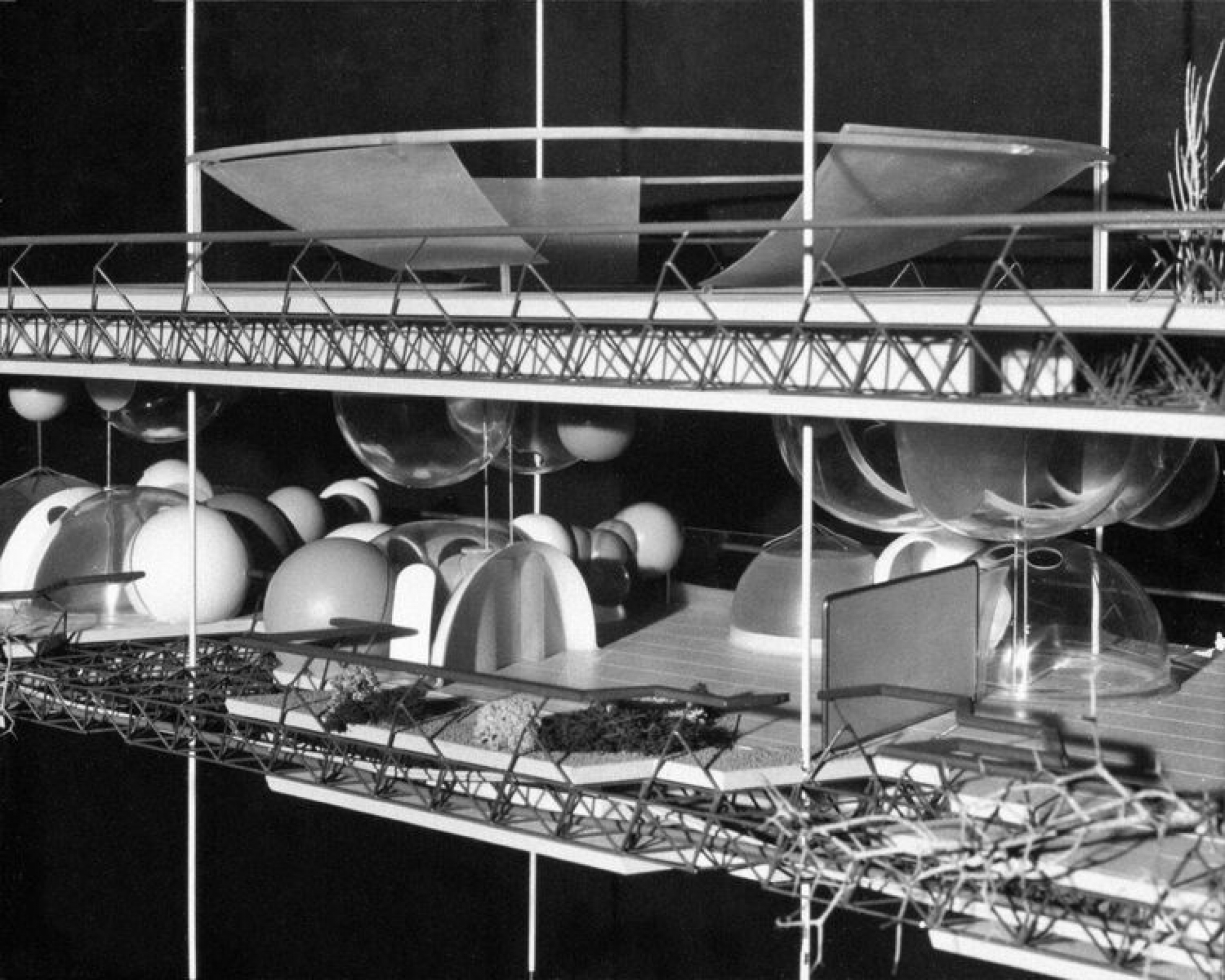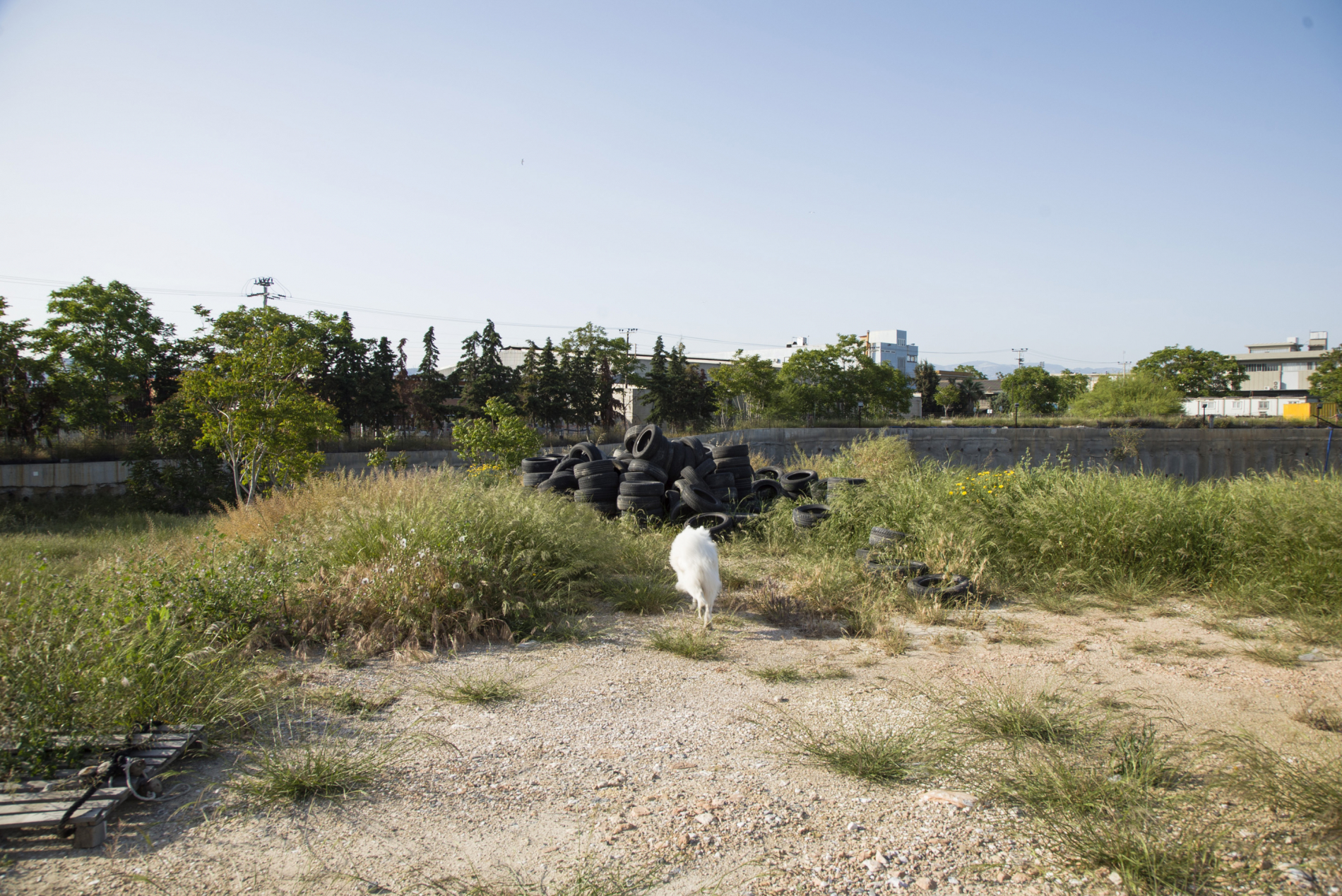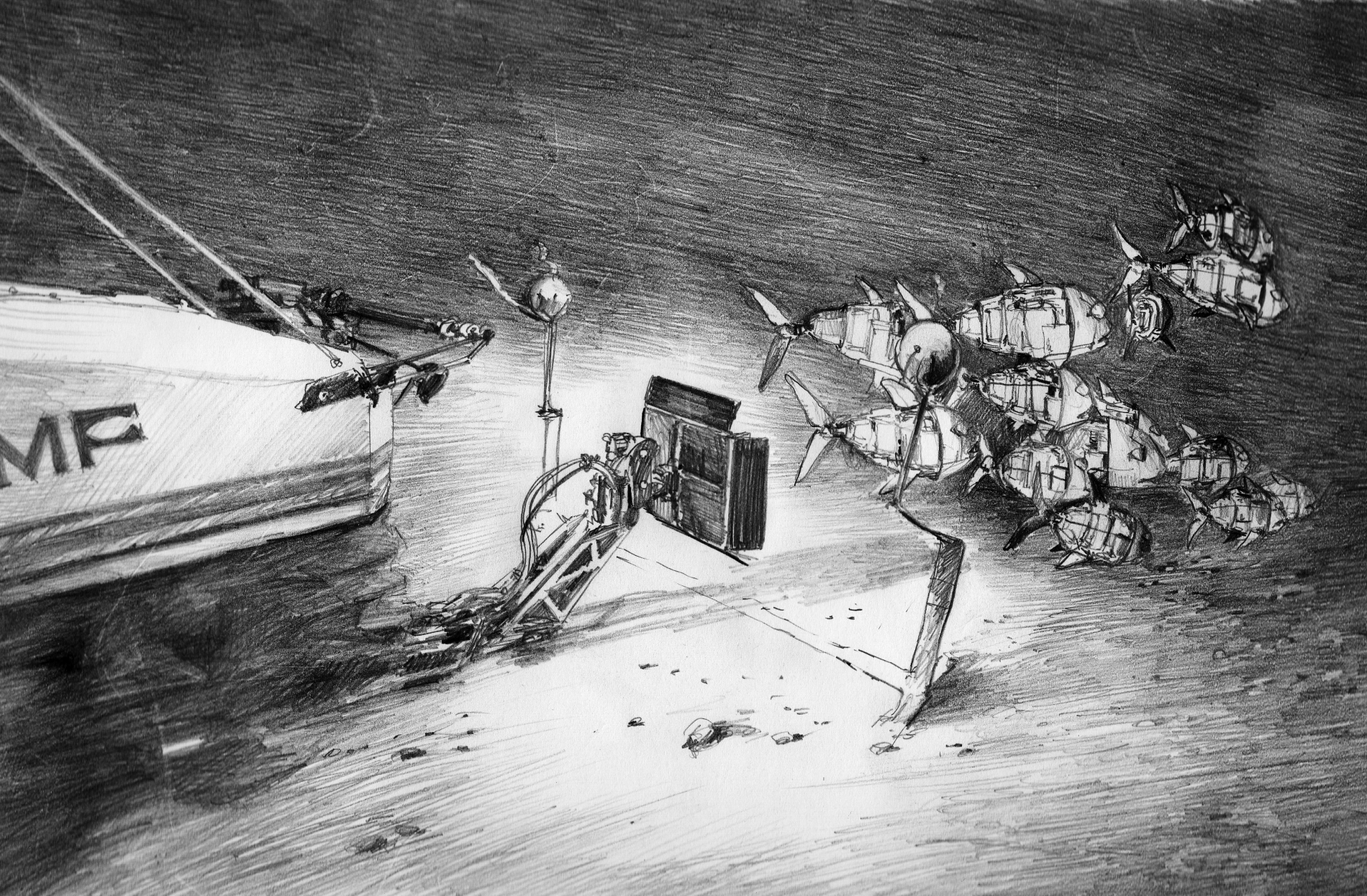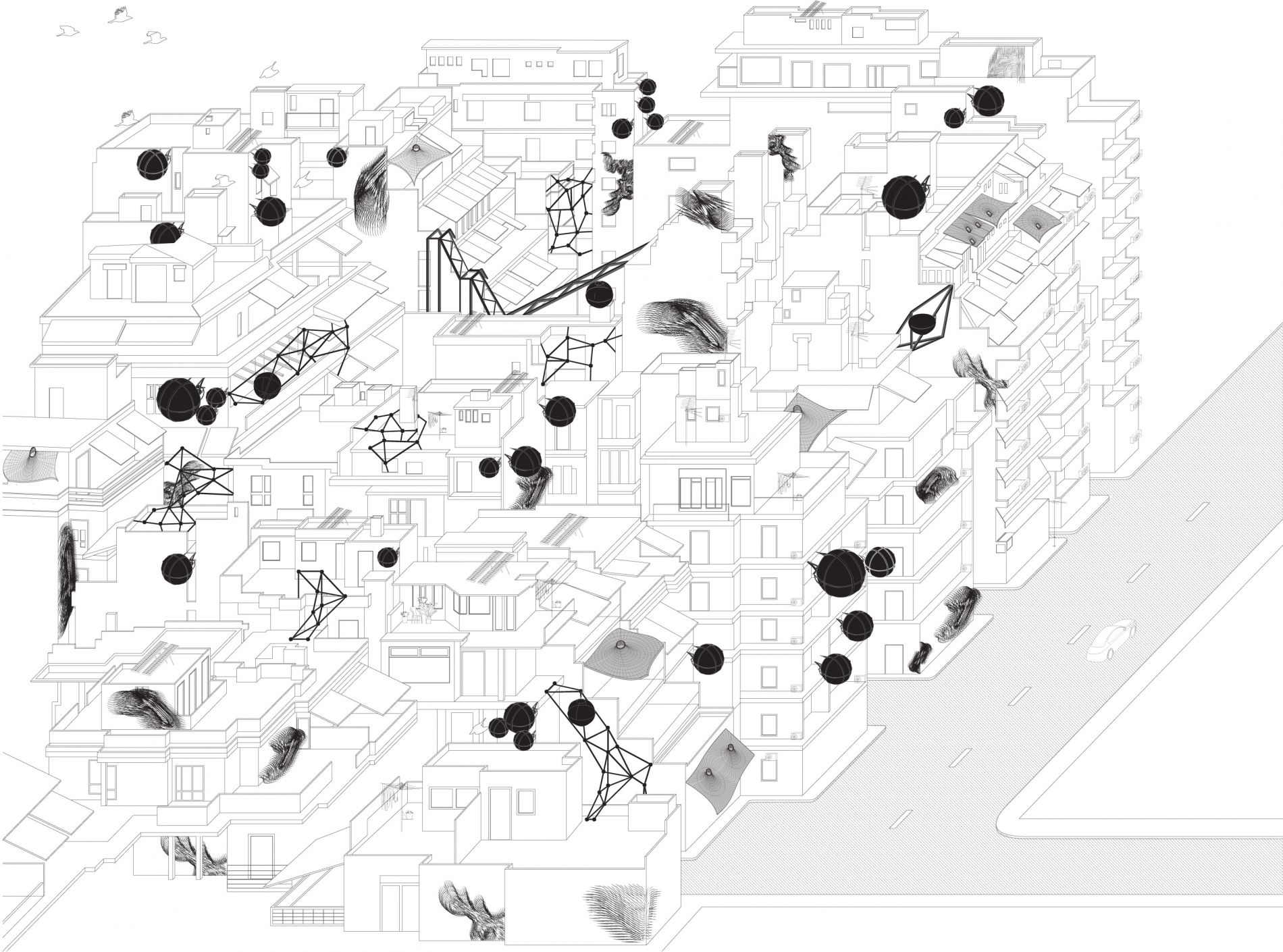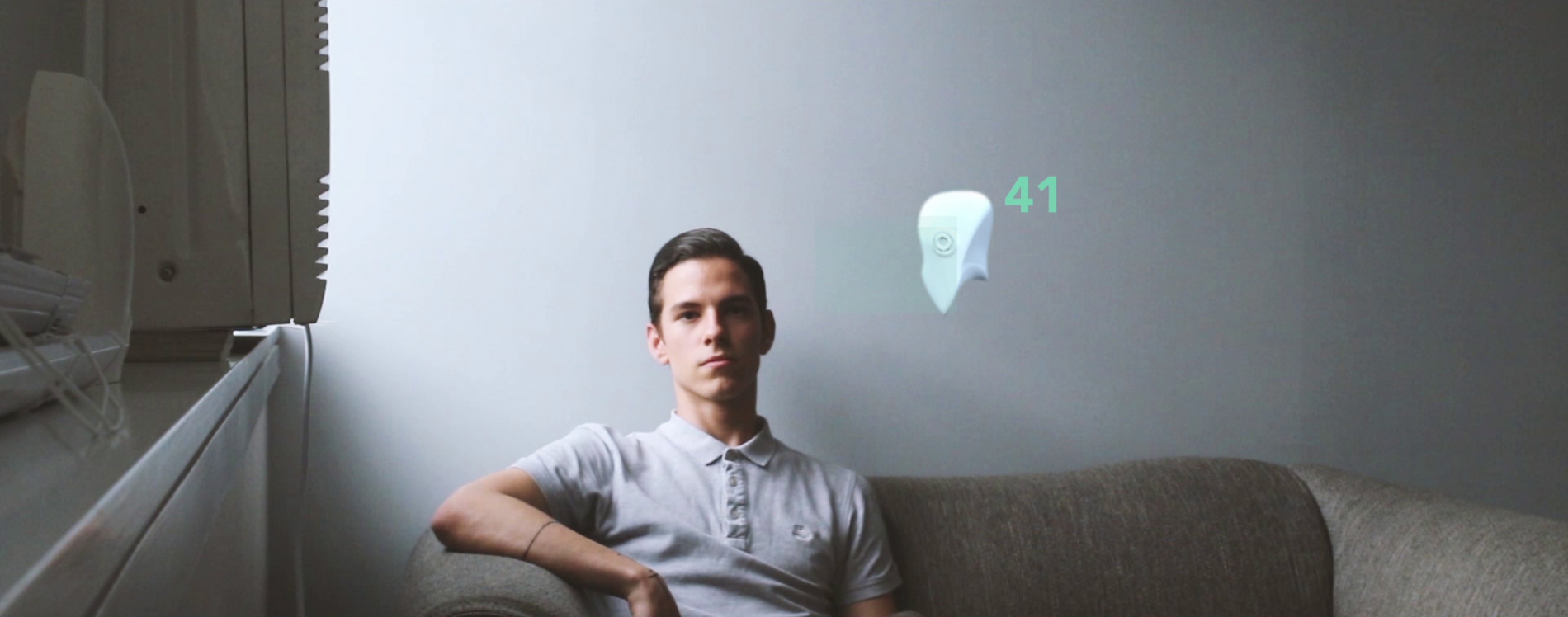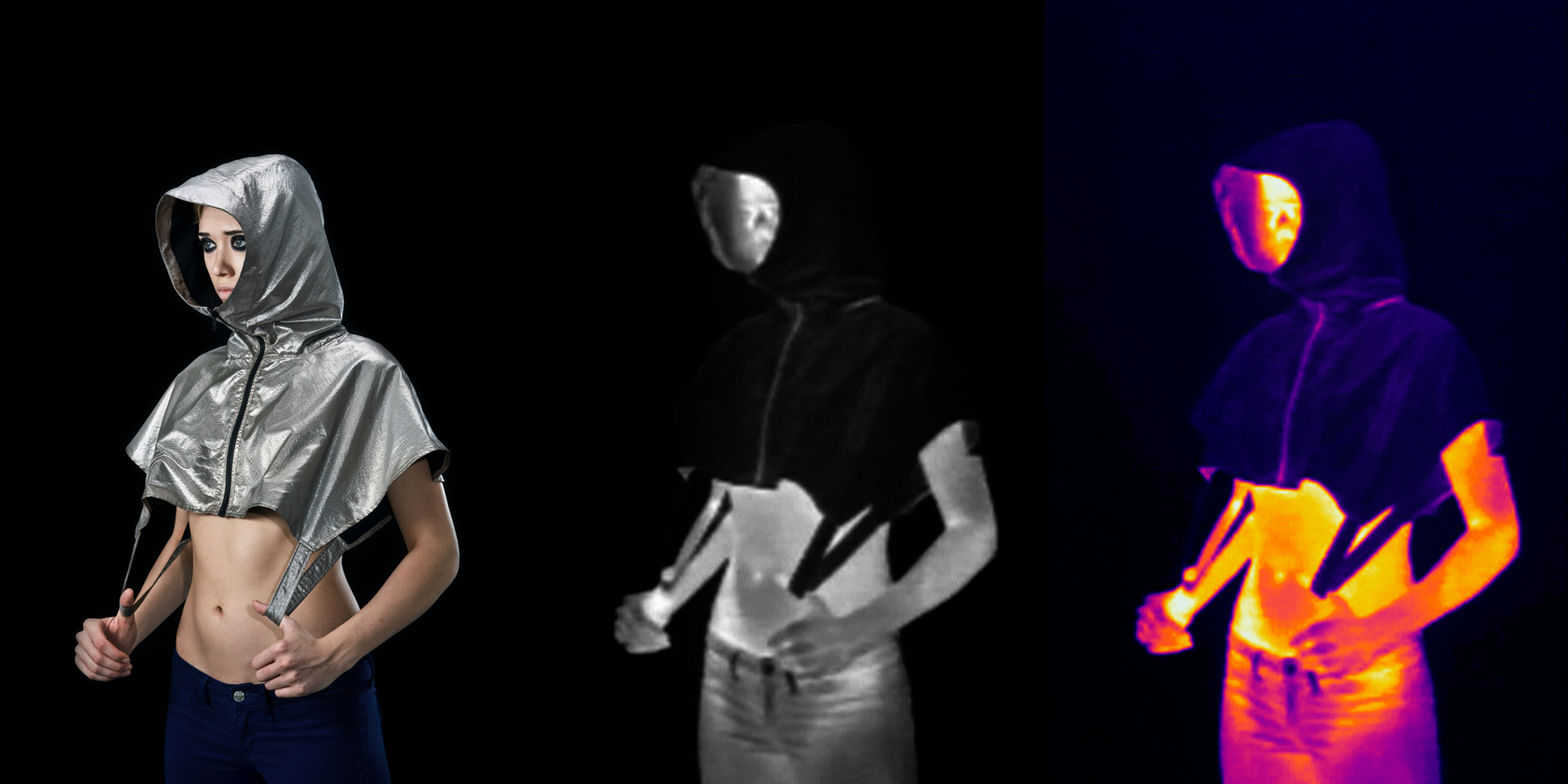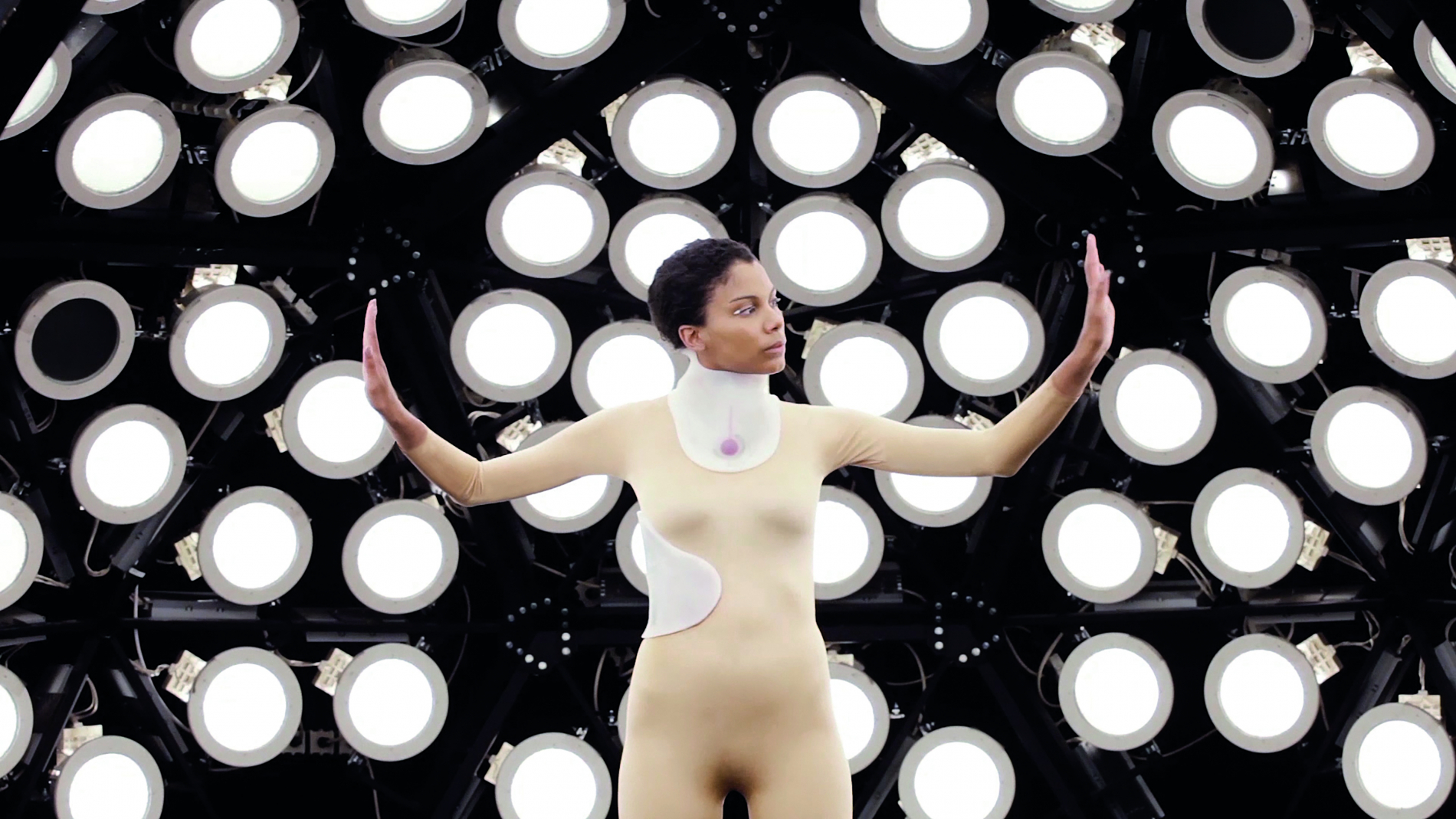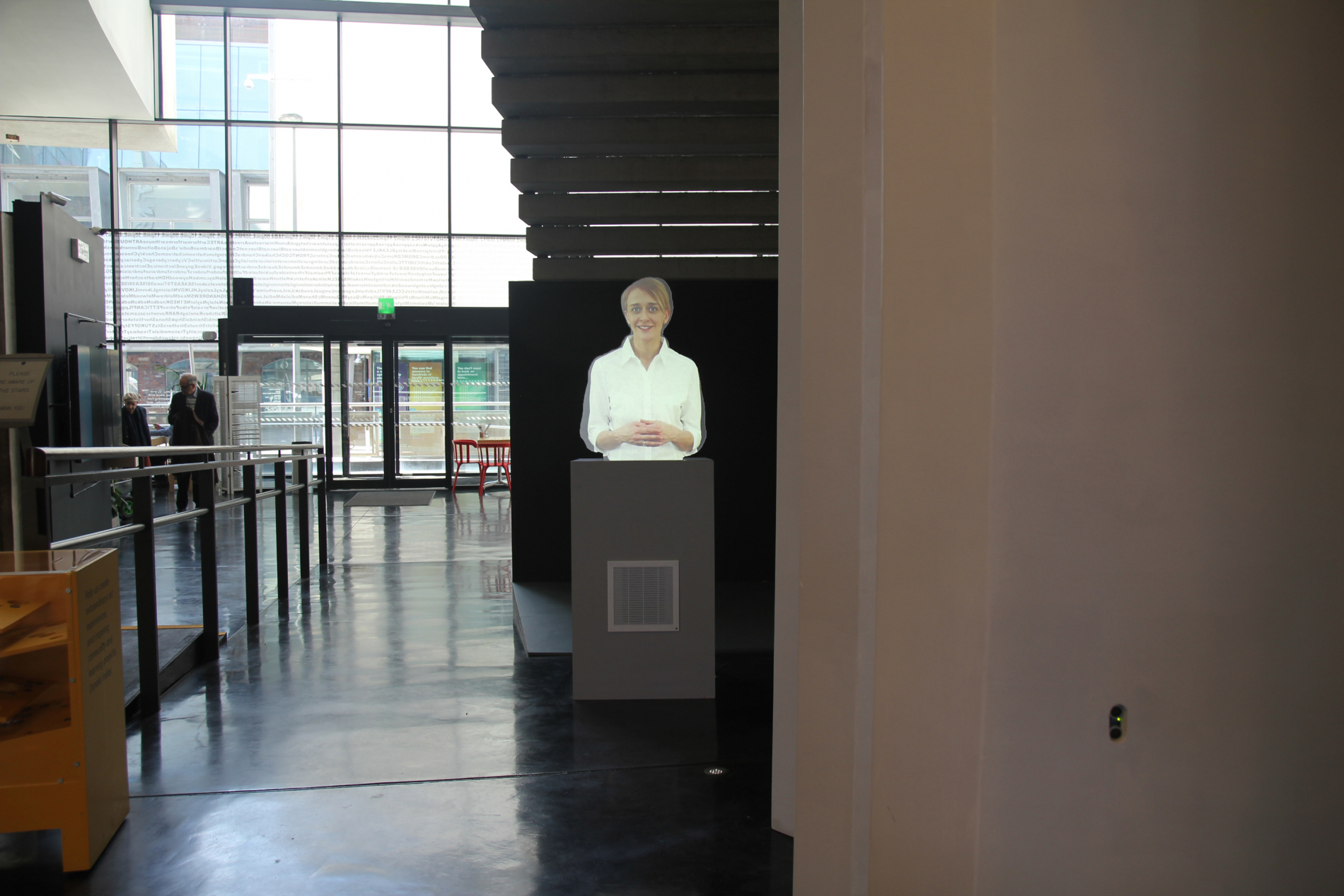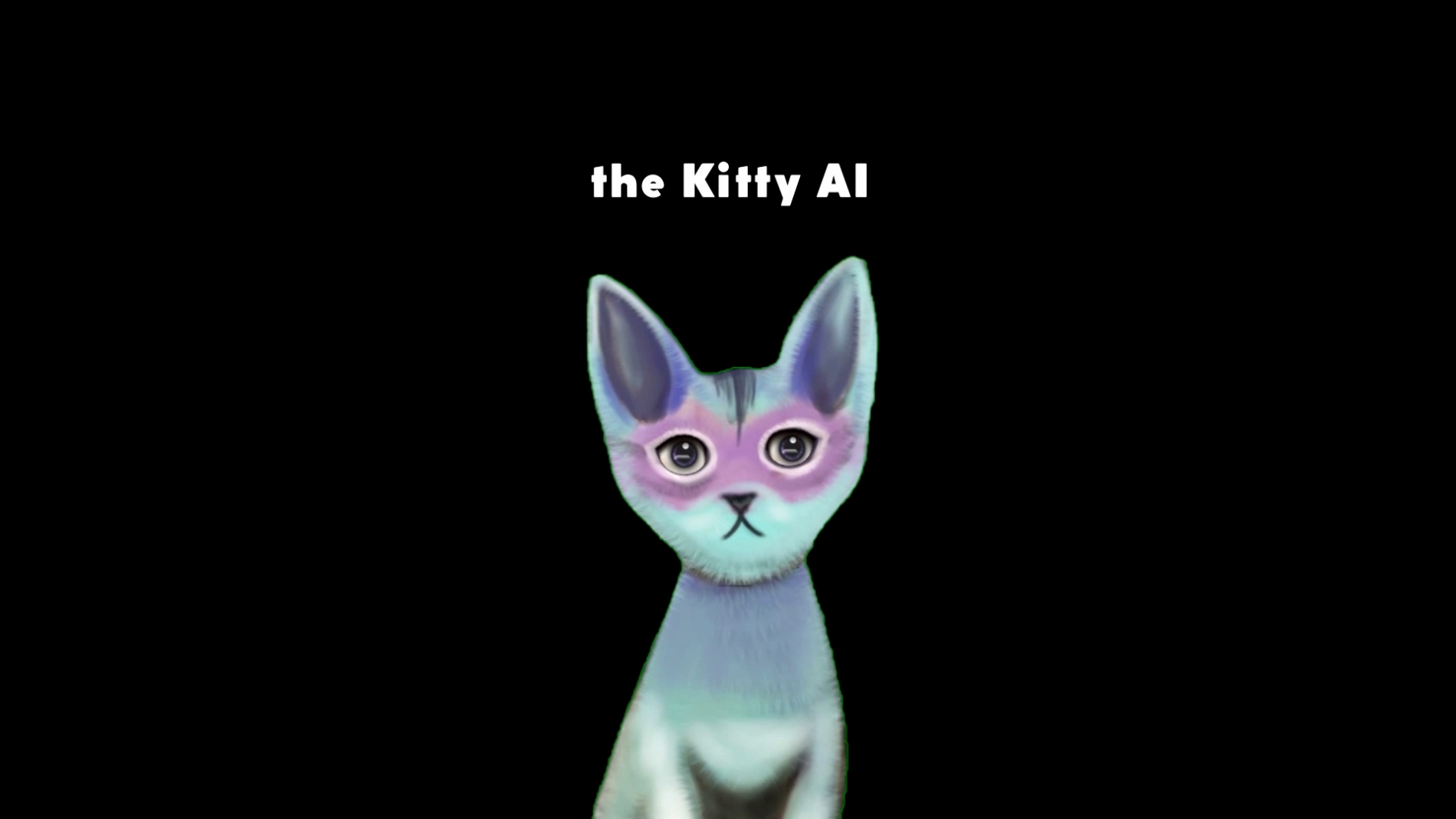
Beyond Anthropos (14)
The current acceleration of technological changes brings more and more into doubt the human’s sovereignty on the planet. Various discussions shed light to older fears, but also hopes concerning the Machine’s empowerment. Is it possible, for instance, that future forms of ‘artificial superintelligence’ might supersede the human? Can additive manufacturing and robotic systems enhance human’s abilities?
Exploring questions such as the above, the works presented focus on the formation of a new hybrid condition between human and machine, one that renders even their distinction difficult. Objects, bots, advanced A.I. agents with affective skills, and wearables, offer the ground to discuss various aspects of this condition: from the future of companionship, and personal relationships, to the organization, and the governance of the future city. They speculate on the changes that tomorrow might bring, if decisions are to be taken more and more by machines. Maybe the relationship of the human to the elements of the nature, the shells, the networks, and the society, would then find a new, peculiar balance. But this would inevitably mean that the development of the future city would also be beyond the human’s control...
The theory of Ecumenopolis was developed by Constantinos Doxiadis' Athens Center of Ekistics as part of a research project for the “City of the Future” that was funded by the Ford Foundation.
According to Doxiadis, the great increase of urban population and the dynamic growth of cities will lead to their interconnection in a continuous network, into one universal city which we may call the ecumenic city, or Ecumenopolis. This is an inevitable reality that is already under construction and is likely to start acquiring shape at the beginning of the 22nd century. The big question that arises for Doxiadis is not about the dimensions, the structure, and the form of Ecumenopolis, but about its function, the type of life that will be created within it, and the quality of life that will offer to the people.
Doxiadis anticipates that the cities of the future will be extra-human, beyond human's capacity to control them. The world may be led to inhuman conditions as the problems and weaknesses of the 20th century's cities are multiplied. At the same time, he believes that Ecumenopolis may be “the real city of human” as for the first time in history, people will have one city rather than many cities belonging to different national, racial, religious, or local groups. Ecumenopolis will form a continuous, differentiated, but also unified texture consisting of many cells, the human communities. According to Doxiadis, this evolution corresponds to the dream of a cosmopolis, as the ideal state in which all people will be equal and united into one world.
The exhibition includes drawings, diagrams and photographs from the research project for the "City of the Future" where the theory of Ecumenopolis was developed, from lectures and publications by C.A. Doxiadis on the theory of Ekistics, and from the Delos Symposia that Doxiadis organized from 1963 to 1975. All material belongs to the Constantinos A. Doxiadis Archives.
© Constantinos and Emma Doxiadis Foundation
The elusive presence of global warming – rendered visible only at the very local effects of climate change such as in the case of coastal flooding – serves as a harbinger of tomorrow’s world; it foreshadows a displacement of Western civilization’s anthropocentric orientation in both experiential and philosophical terms. If our previous concept of ‘world’ was premised on the assumption that humans exist outside of ‘nature,’ today’s understanding of tomorrow’s ‘world’ renders such distinctions between human and nonhuman space transitional and thus inherently ambiguous.
Τransitional Environments brings together the work of Cathryn Dwyre and Chris Perry, their interdisciplinary design practice pneumastudio, as well as their academic design research conducted at Pratt Institute and Rensselaer Polytechnic Institute, respectively. Viewed as larger body of design research, the work explores the simultaneous proximity of and separation between human and nonhuman space by producing transitional material, formal, spatial, and programmatic conditions. Irreducible to one state or the other, these transitional environments are inherently ‘postnatural’; rather than seek a resolution to the nature-culture conflict that characterizes our contemporary moment, they instead seek to reveal new forms of critical awareness and creative potential by embracing it.
The installation hosts the following projects:
A Curious Cabinet by pneumastudio (Cathryn Dwyre and Chris Perry), 2017
Anthropocene Folly by pneumastudio (Cathryn Dwyre and Chris Perry), 2015
Into the Fog by Gabriela Fiorentino and Yara Kawar (thesis students), Cathryn Dwyre and Richard Sarrach (studio critics), Pratt School of Architecture, 2016
Scar City by Dariusz Kulinski and Skye Ruozzi (thesis students), Cathryn Dwyre and Richard Sarrach (studio critics), Pratt School of Architecture, 2016
Disfigured Landscapes by Jacob Wigton (thesis student), Chris Perry (studio critic), Rensselaer School of Architecture, 2016
Transgenic Environments by Hailey Beyer (thesis student), Chris Perry (studio critic), Rensselaer School of Architecture, 2016
The era of human scale art and design may be over. Increasingly, we need forms of intervention that take into account the deep, temporal impact of material processes and practices. Whilst developing planetary modes of vision, communication, and control we have altered the very ecosystems we seek to assert mastery over. In rendering the entire Earth an object of scientific study and commercial interest we have become implicated in the deep futures of every organism that grows, crawls, and blooms on its surface. Alongside this our economic and social systems have become so entwined with the natural order we separate ourselves from, that they have begun to evolve like organisms themselves, mutating beyond our capacity to understand them. As Richard Pell and Lauren Allen outline in their definition of post-nature, human beings inhabit a world where organisms, their habitats and evolutionary niches, are no longer determined simply by ecological pressures, but by an ongoing negotiation between commerce, regulation, and genetics 1, a relationship that, we argue, increasingly works both ways.
Beginning from their contributions to The 3D Additivist Cookbook, artists Geraldine Juarez, Antonio Esparza, Darlene Farris-Labar, and the collective ARTKELAB, offer works for this exhibition that probe the concept of the post-natural. The works intervene on synthetic/natural, technological/cultural boundaries using 3D fabrication as a tool for critical, poetic, and playful activism. Each work tackles questions of significant contemporary relevance to the Mediterranean region from ludicrous dystopian futures, offering post-natural hybrids as conduits for weird forms of political engagement that might have a chance of altering our understanding of the cultural now.
1 "Out of the Lab, Into the Wild - Center for PostNatural History." Accessed January 11, 2016.
http://postnatural.org/Out-of-the-Lab-Into-the-Wild
The installation features:
The 3D Additivist Manifesto by Morehshin Allahyari and Daniel Rourke, with sound design by Andrea Young, 2015
The 3D Additivist Cookbook by Morehshin Allahyari and Daniel Rourke, 2016-17
USOA 1.0 (Ultimate Software Open Animal) by ARTKELAB, 2015-17
Kauri by Geraldine Juárez, 2015-17
Ancient Mediterranean Flowers from the Soil's Edge by Darlene Farris-LaBar, 2017
The TurtleBag by Antonio Esparza, 2016-17
The 3D printed objects were produced especially for this exhibition.
"Nobody remembers why it was radioactive in the first place."
As the world turns again towards nuclear power, producing readily available energy but also waste toxic for millions of years, urgent questions once again emerge: What do we leave behind, what will the future inherit from us? How can we as individuals and society deal with the scales and scopes of deep time? How can we make sense of the vast time-scales involved?
Inheritance consists of precious jewelry, a necklace, earing and a broché, which are radioactive and therefore, rendered practically and symbolically unwearable for deep time, until the radionuclide transmutes naturally into a stable and non-radioactive isotope of lead. Together with an electromechanical device to determine the remaining radioactivity the jewelry is stored in a concrete container which is built to endure over a vast amount of time. With these items the story goes that each time the jewelry is handed over from one generation to the next, the ritual of measurement determines if the jewelry can finally be brought in use and fulfill its promise of wealth and identity or if it has to be stored away until the next generation.
Electronic Urbanism is a research project in progress for more than 20 years. The first research stage starts during Zenetos' studies in Paris and concludes with the first presentation of the project at the Modern Housing Organization's exhibition in Athens in 1962. The final project for the "City and the house of the future" is presented at the 1st Building Exhibition at Zappeion in 1971. In this project, Zenetos has adapted his design for an all-purpose furniture that was distinguished in the Interdesign 2000 competition (1967).
Zenetos' project for the city of the future is the outcome of systematic research on the development of applications in electronics. Studying articles in scientific journals of the time, Zenetos defines accurately the forthcoming applications of 'tele-management', 'tele-work' and 'tele-services'. Taking into consideration the accelerating changes of living elements in the cities of the future, he proposed flexible systems for both building and infrastructures. He believed that the structure of the city and the house of tomorrow would have to be ephemeral and, as much as possible, immaterial. For this reason, he designed a system of light three-dimensional supporting cable-structures, like a spider's web, containing vertical garden-cities and dense networks of improved telecommunications media. The ground, which was left almost free, was an uninterrupted natural space as the city would expand over forests, lakes, rivers, and seas.
This space structure can receive any type of infill elements, but the most important one is that of the moveable tele-processing cell. The cell is equipped with ananthropomorphic all-purpose furniture, which controls the tele-activities, the audiovisual contacts, and the environmental conditions. According to Zenetos, this control switch is going to be the heart of the human of tomorrow. The adjustment of the furniture's various parts is mechanical through keys, but Zenetos already forecasts that in the future this will be controlled directly by the user's brain, with the help of a hyper-sensitive electro-brain waves receiver.
The material that is presented in the exhibition belongs to the Takis Ch. Zenetos archive.
Feral Remnants (Dog) offers a poetic projection onto a further future with no human presence in sight. The work is a multimedia installation consisting of a metal tank filled with black oil and an HD video with an original music score. The video features a purebred Samoyed dog being shot wandering in an empty environment in slow motion. The musical score (Medieval, 2016, composed by Ori, the artist’s rock trio) creates a certain dystopic heavy atmosphere, yet the screaming voice evokes a sense of riot. No human is to be seen. The dog is reversely projected onto the wall screen, and distortedly reflected on the petroleum which trembles according to the bass sequences of the music. Petroleum evokes the silent hope of discovering oil under the Greek territory, while also stands as a symbol of a pragmatic vision of tomorrow and a blurry dysfunctional dream. The modernist design of the iron tank refers to an idealistic envisaging of the future, while the sculpture mediates the viewing of the abstract and poetic image of the dog. However, the work inevitably describes a future where the lonely dog runs loose in an environment where humans are extinct. Depending on the interpretation of the installation, the viewer is left with an ambivalent sense of melancholia or a certain spark of promise about the future.
Courtesy of CAN Christina Androulidaki gallery
α2525, Athens in S.F. is based on 13 short stories written by 10 Greek sci-fi authors, who were specifically commissioned to provide them imagining the future of Athens. It is a film project that was subsequently created to address the questions, images and ideas presented in the utopian or dystopian scenarios of the authors. In the form of an omnibus documentary, which makes use of interviews, videos and drawings, the film evokes the writers' visions and hypotheses regarding the city's future in different time periods. The project touches upon several issues such as: climate change; possible epidemics; the application of augmented reality in public space; the fusion of cities through virtual reality; the uncontrollable dissemination of fake news; religious fanaticism; a future society based on collectivity; a new autocratic plan of global development; technologies that are beyond man's control or trigger global geopolitical shifts. The film is accompanied by the published stories on which it is based.
Air Shake examines the character of air pollutants in Athens of the year 2027 to imagine both an array of future diseases and cures. It documents phenomena of leaching caused by a variety of chemicals that have been released into the atmosphere and their scientific, economic, and social attributes. Air Shake projects current urban habits in plausible future scenarios extracted from the present, based on the impact that different mixtures of air impose on human bodily systems. The project imagines an array of diseases that have begun to manifest in 2012, with Athens registering the highest levels of atmospheric pollution in decades. Because of the debt crisis and the citizens’ denial to yield to the overblown energy taxation, the continuous combustion of random cheap available materials, has resulted in the excessive release of particulate matter, sulfur dioxide, carbon monoxide, and other carcinogens, eventually disemboweling the livelihood of citizens and their right breathe in the city. The projection of four speculative diseases onto the urban environment takes form as a series of healing environments, making visible the linkage between the air pollution and the imagined disease. The Air Shake installation operates around two systems that together create an immersive experience. First, there is a series of chimneys, which present the city upside-down, spewing different shakes of air mixes to heal city dwellers. A secondary system is visualizing the air shakes each chimney spews in a virtual reality environment, accessible through a series of movable tablets installed in the room. The installation space is imagined as a virtual healing environment that allows the physical embodiment of the visitors to project and immerse themselves in a series of future atmospheres.
The 1950’s television series The Twilight Zone was a series focusing on the cross over between humanity’s fear, intelligence and superstition. In the original series, an episode called “The Lonely” focused on a man sent to prison on asteroid for solitary confinement but falls in love with a woman like robot who becomes his companion. In that time, our fears were catalysed through magic or science fiction, but our fears now lie in the unprecedented growth of technology. With our smartphones becoming a deposit of our life, our friend, what will this relationship be in 50 years? Speculative design can help us extrapolate our current beliefs onto to tomorrow’s technology. During a schooling semester, students were asked to design objects over the next three generations. The overwhelming majority focused on companionship, a friend from birth till death. With our fears and superstitions turned up to a deafening volume we can speculatively assess what future designers of technology companionship should consider. The works present students’ different fears and excitements over the future of technological friendship, consulting complex realm of ethics, reality and logic. Some are optimistic, some are not but upon meta-analysis of all the students' views it becomes apparent that the future of technological companionship is under negotiation.
3D printed objects sponsored by Stratasys Ltd. using J750 full-colour multi-material printing technology.
Featuring the following projects:
Play, Protect, Preserve, by Nicole Hone
Bot, by Evangeline Martin
Postcards from Mars, by Loek Hendriks
Stealth Wear is a vision for fashion that addresses the rise of surveillance, the power of those who surveil, and the growing need to exert more control over privacy. It explores the aesthetics of privacy and the potential for fashion to challenge authoritarian surveillance technologies. The project is a collection of metal-plated garments that evade the thermal cameras used on military drones. The collection is inspired by traditional Islamic dress and the idea that garments can provide a separation between man and God. In Stealth Wear, this idea is reimagined in the context of drone warfare as garments that provide a separation between man and Drone. The 'anti-drone' burqa, hijab, and hoodie are fabricated with a highly-flexible silver-plated fabric that reflects the wearer's thermal radiation. This fabric can prevent observation for overhead thermal imaging systems, such as those used by military drones and heat-seeking munitions.
Sarotis, a Greek word for scanner, is a series of soft robotic prosthesis combined for the first time with 3D vision systems to create a whole new way of sensing space through the body. It is predicted that by 2020, 5.4 billion mobile devices will feature 3D sensors enabling any user to scan and store their environments. If 3D vision technologies turn out to be as successful as their 2D predecessors, 70% of the world's population is expected to be capable of scanning, storing and analysing their environments.
Sarotis, developed at the Interactive Architecture Lab, Bartlett UCL, aims to explore how 3D vision technologies will change the way humans see and interact with the world. It looks into possible intimate wearable technology futures and examines how advanced vision systems and other sensory technologies will possibly be connected directly to the body through their soft interfaces.As part of the study an experimental prosthesis and a film were produced. The prosthesis was designed to study how one's awareness of space can be amplified using live 3D scanning technologies that control the inflation and deflation of soft robotic wearables. The speculative film invites the viewer to consider how fluidic hydrogel interfaces may dissolve the distinction between our own physiology and that of the softening machines that will extend our bodies.
Other possible applications of the project include assisting the blind or visually impaired with navigation, or in providing haptic feedback for virtual reality environments.
Project developed and released by Interactive Architecture Lab in the Bartlett led by Ruairi Glynn.
Homo Sacer is an installation consisting of a projected 'hologram,' of the kind increasingly found in airports, railway stations and government buildings. The hologram speaks lines from UK, EU and UN legislation, as well as quotations from government ministers, regarding the nature of citizenship in the 21st century. Beginning with the Universal Declaration of Human Rights' 1948 directive "Everyone has the right to a nationality," the hologram's monologue steps through the various laws which repeal this right, culminating in the text of the letter which stripped young Mohamed Sakr–who was later killedby a drone strike–of his British citizenship, and the UK's Home Offices oft-repeated mantra "Citizenship is a privilege not a right." Homo Sacer walks visitors through the process by which a citizen can be translated through various forms of identity, and ultimately reduced to the state of homo sacer, the accursed man, who may be killed at any time.
Ashley Madison Angels at Work in Athens is part of a series of works researching Ashley Madison, a Canadian online dating service marketed worldwide to married people seeking casual sex. In July and August 2015, an anonymous group called The Impact Team stole and released all of Ashley Madison's internal data–including the entire website code and functionality, customer data and the CEO's emails. The data breach revealed that with a disproportionate number of male subscribers and virtually no human women on the site Ashley Madison had created an army of 75,000 female chatbots to draw the 32 million male users into (costly) conversations. This triggered !Mediengruppe Bitnik to use Ashley Madison as a case study to raise questions around the current relationship between human and machine, Internet intimacy and the use of virtual platforms to disrupt the physical.
For Tomorrows, !Mediengruppe Bitnik uses the localized data from the Ashley Madison hack to give atemporary physical embodiment to 7 of the 165 fembots that were active in Athens at the time of the data breach. Each fembot has a name, an age and a location and uses sentences from a list of pick-up lines to contact other users. The 165 fembots of Athens provided entertainment to around 22.910 registered users in Athens.
What if political governance were replaced by one speaking kitten AI?
The year is 2039. After years of political turmoil catalysed by R-Crisis EMEA, a refugee crisis triggered by war and the detrimental effects of climate change, the incompetence of the political elites to generate and retain trust in the populations becomes ever more obvious. Politicians across Europe and EMEA countries fail to serve the sentient human.
One pioneering neuro-engineer develops an artificially intelligent and–for the first time–feeling virtual being. Kitty AIis an artificial intelligence with the affective capacities of a cat who can love up to 3 million people. The AI not only carries the tasks of a governor; it also takes care of its citizens at a personal level. It takes care of garbage disposal, makes sure your children get to school safely and drink clean water. She/he/it manages the citie's household budget, and maintains diplomatic relations with both physical and virtual leaders of the world.
This speculative future scenario is inspired by the Black Mirror episode "TheWaldo Moment,” where a cartoon character becomes a presidential candidate, an idea that seems less absurd considering the political developments of 2016/2017. German author Leif Randt’s novel Planet Magnon enfolds a narrative in which computers run an entire galaxy, a concept that is supported by the emerging field of Global Systems Science.


